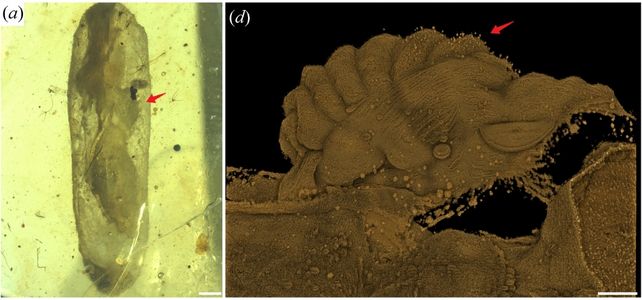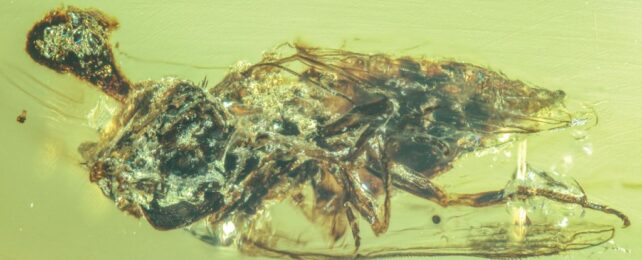Scientists have caught ancient parasitic fungi in the act of bursting from insect hosts, in dramatic scenes frozen in amber.
Dating back almost 100 million years, these two specimens are among the oldest evidence of 'zombie' fungus, second only to one early-Cretaceous species discovered back in 2008.
Amber forms over millions of years from the sticky resin of trees, and is renowned for the many bizarre, unique, and enlightening moments it has preserved.
These two pieces, now in the hands of the London Natural History Museum, include the new fungus species Paleoophiocordyceps gerontoformicae, with its tiny spore stalks sprouting from the body of a pupating ant, and P. ironomyiae, in the form of a singular, phallic fruiting body protruding from a fly's head.
Related: Hotter Climate Could Fuel Spread of Dangerous Fungi, Scientists Warn

These newfound species appear to share traits with living relatives, Ophiocordyceps, that continue to infect insects as a means of spreading their spores.
Scientists think the Paleoophiocordyceps species may have separated from Ophiocordyceps around 130 million years ago.

"The fossil evidence shows that the infectious fungi were already adapted to two different insect hosts a hundred million years ago, an ant and a true fly," says paleoentomologist Edmund Jarzembowski from the Natural History Museum.
"This suggests that the fungus made this jump to other insects as they diversified with the rise of flowering plants and new insect groups, especially moths and butterflies."
The research is published in Proceedings of the Royal Society B.
